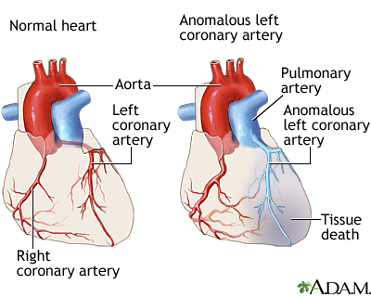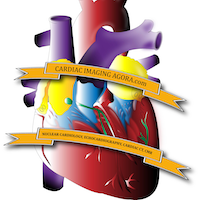MCQ : CHD-12
Neonate with profuse sweating, especially with feeding. What’s your diagnostic suspicion?
A – Dilated cardiomyopathy
B – Congenital corrected transposition of the great arteries
C – ALCAPA
D – Non-compaction cardiomyopathy

Correct answer is C) : ALCAPA
In children with Anomalous Left Coronary Artery from the pulmonary artery (ALCAPA), the left coronary artery (LCA) originates from the pulmonary artery.
Shortly after birth, as the circulation becomes one in series, pulmonary artery pressure and resistance decrease, as does oxygen content of pulmonary blood flow. This results in the left ventricular myocardium being perfused by relatively desaturated blood under low pressure, leading to myocardial ischemia; low pressure is more important in causing decreased myocardial perfusion.
Initially, myocardial ischemia is transient, occurring during periods of increased myocardial demands, such as when the infant is feeding and crying. Further increases in myocardial oxygen consumption lead to infarction of the anterolateral left ventricular free wall. This often causes mitral valve papillary muscle dysfunction and variable degrees of mitral insufficiency. Collateral circulation between the right and left coronary systems ensues. Left coronary artery flow reverses and enters the pulmonic trunk due to the low pulmonary vascular resistance (coronary steal phenomena). As a result, left ventricular myocardium remains underperfused. Consequently, the combination of left ventricular dysfunction and significant mitral valve insufficiency leads to congestive heart failure (CHF) symptoms (eg, tachypnea, poor feeding, irritability, diaphoresis) in the young infant. Inadequate myocardial perfusion likely causes significant chest pain and these symptoms of myocardial ischemia may be misinterpreted as routine infantile colic.
![]()
